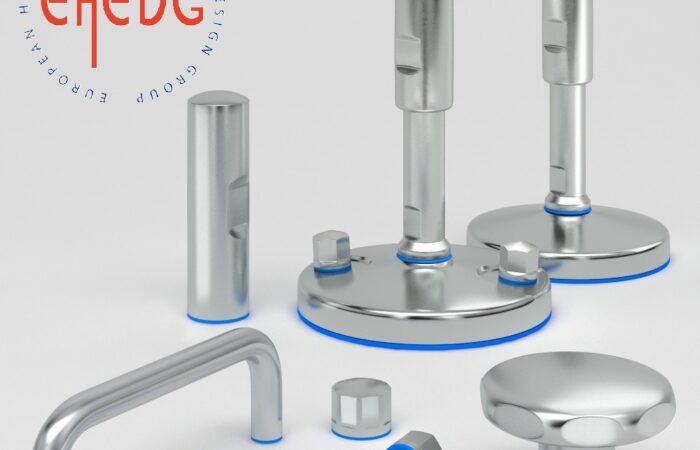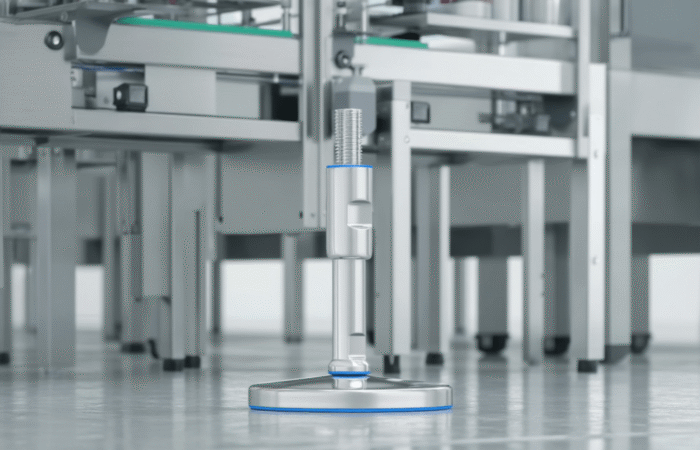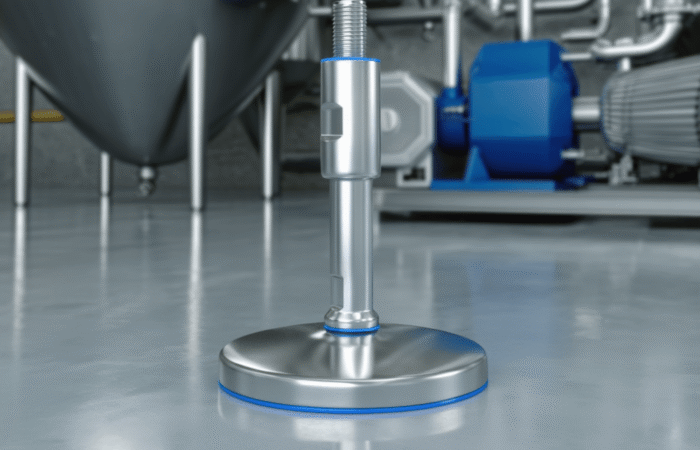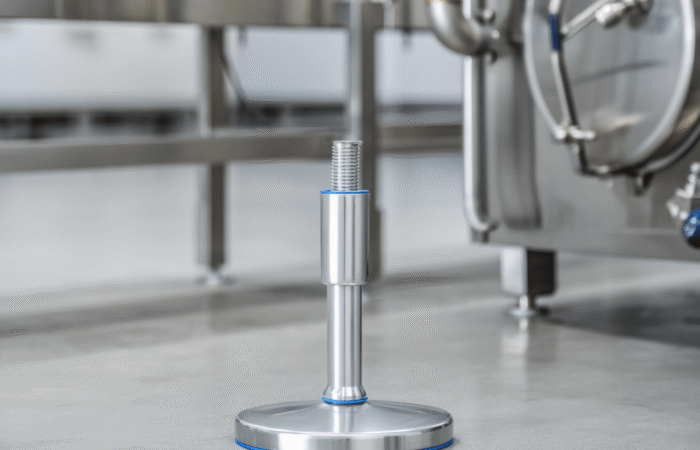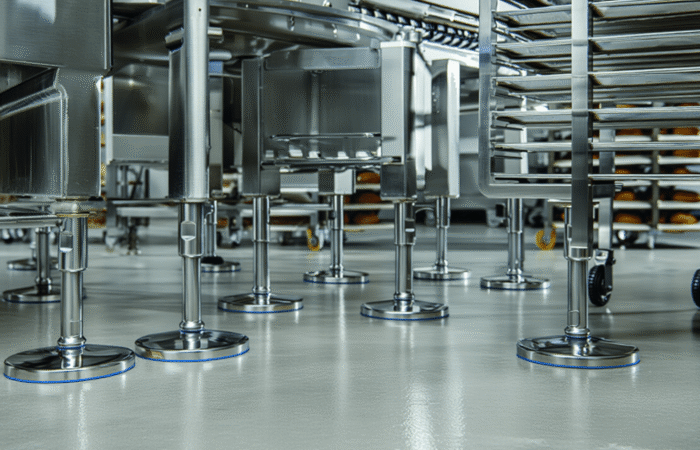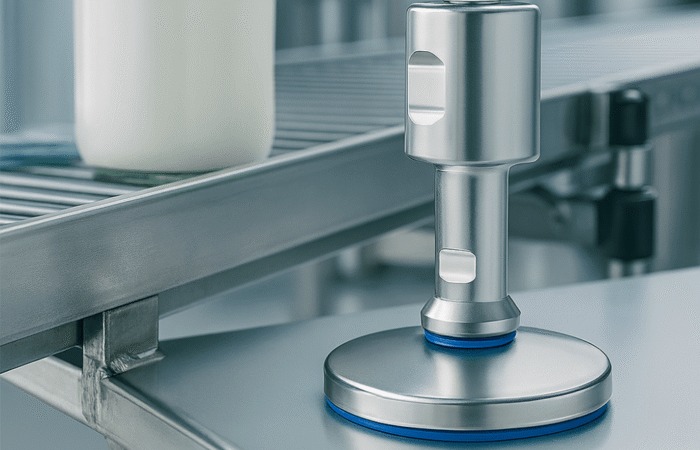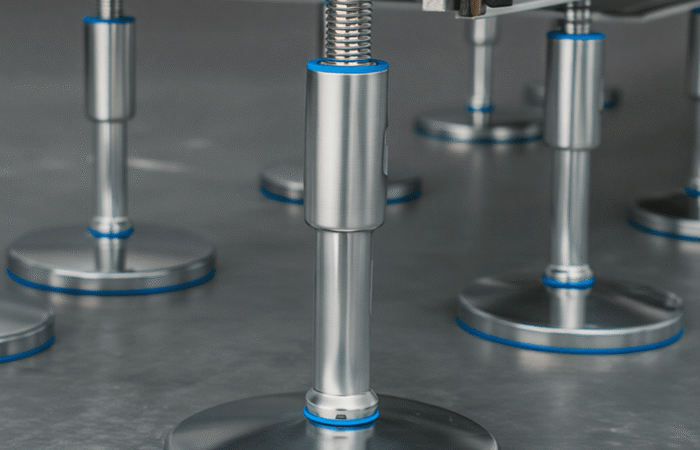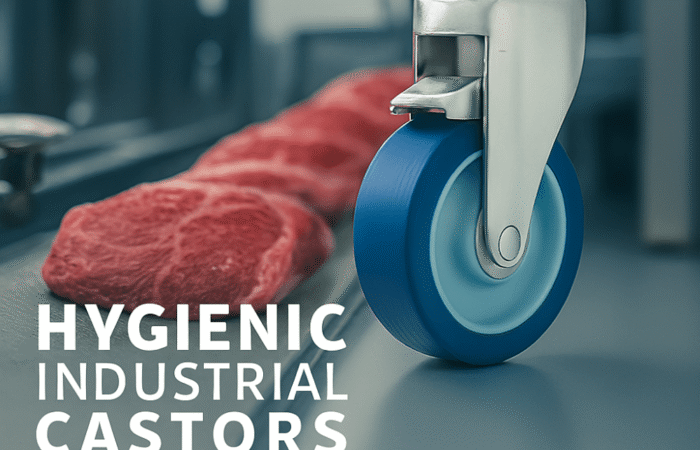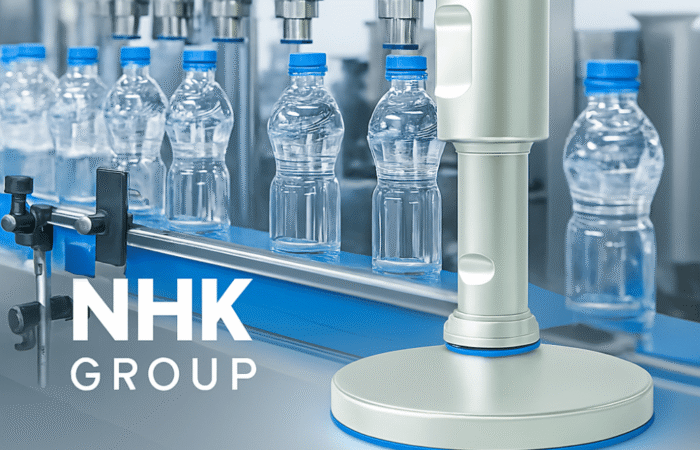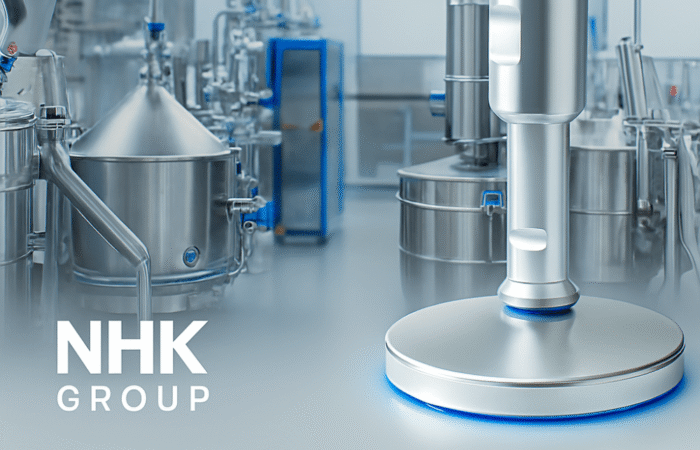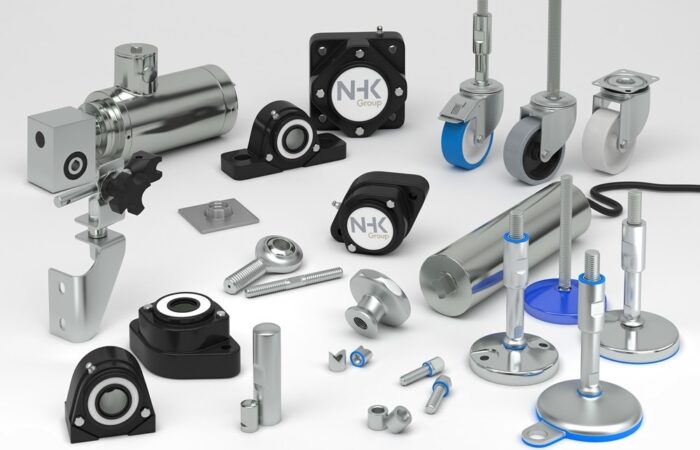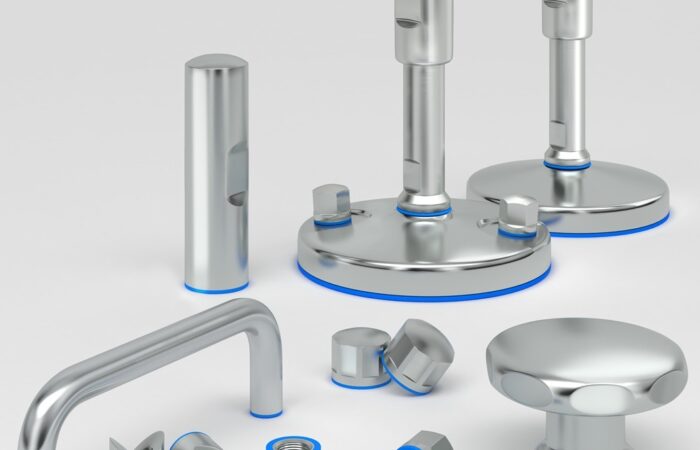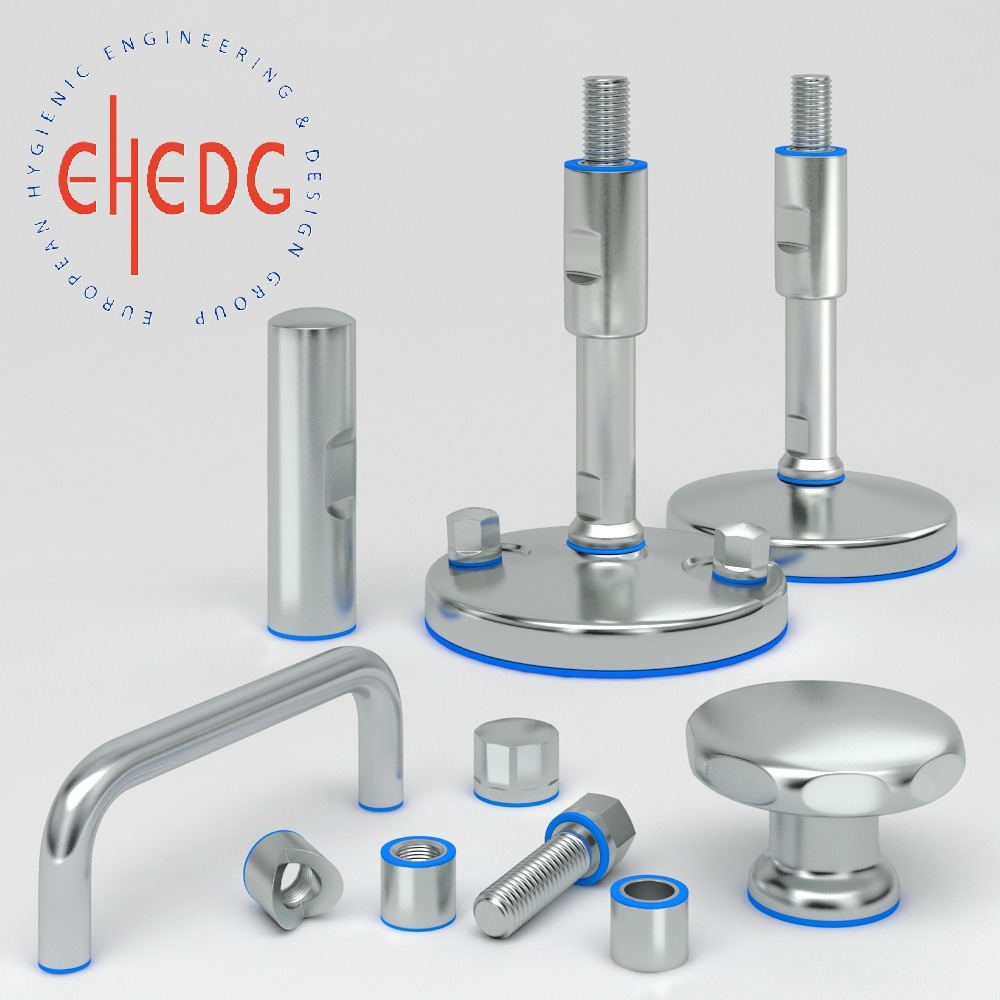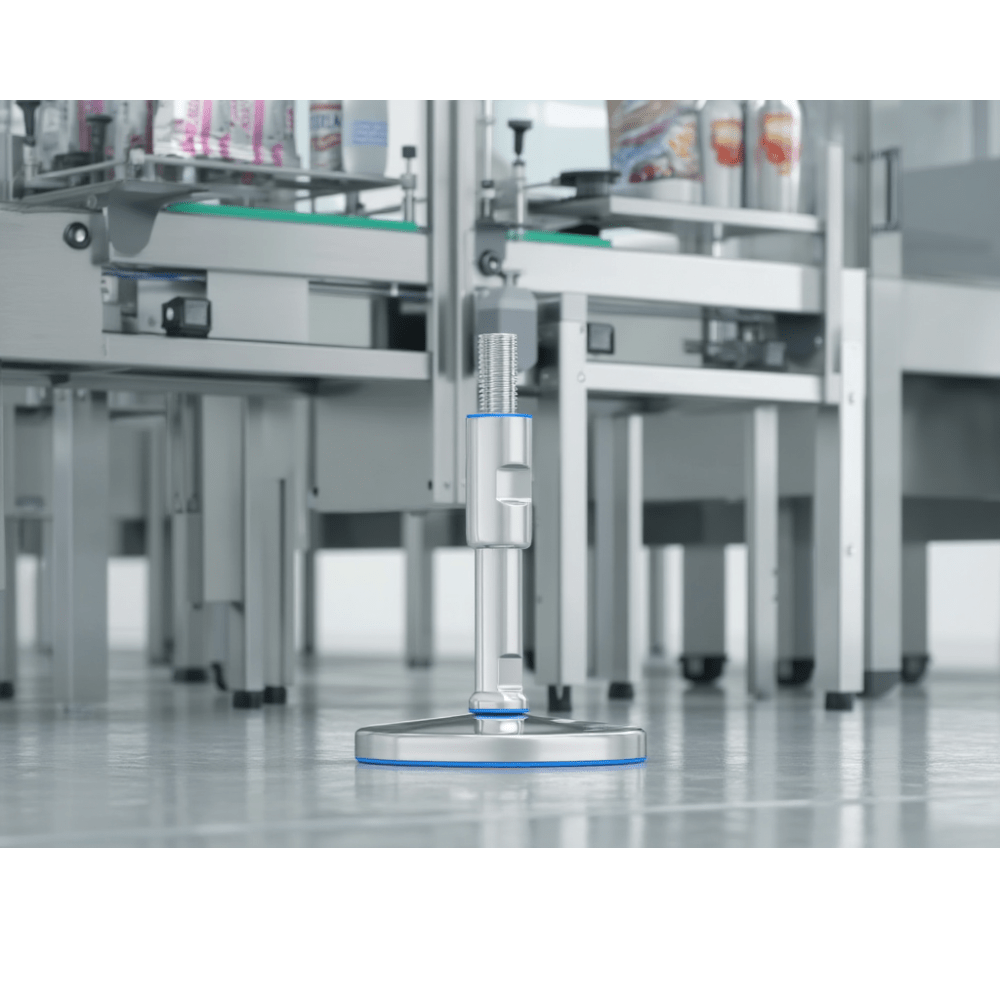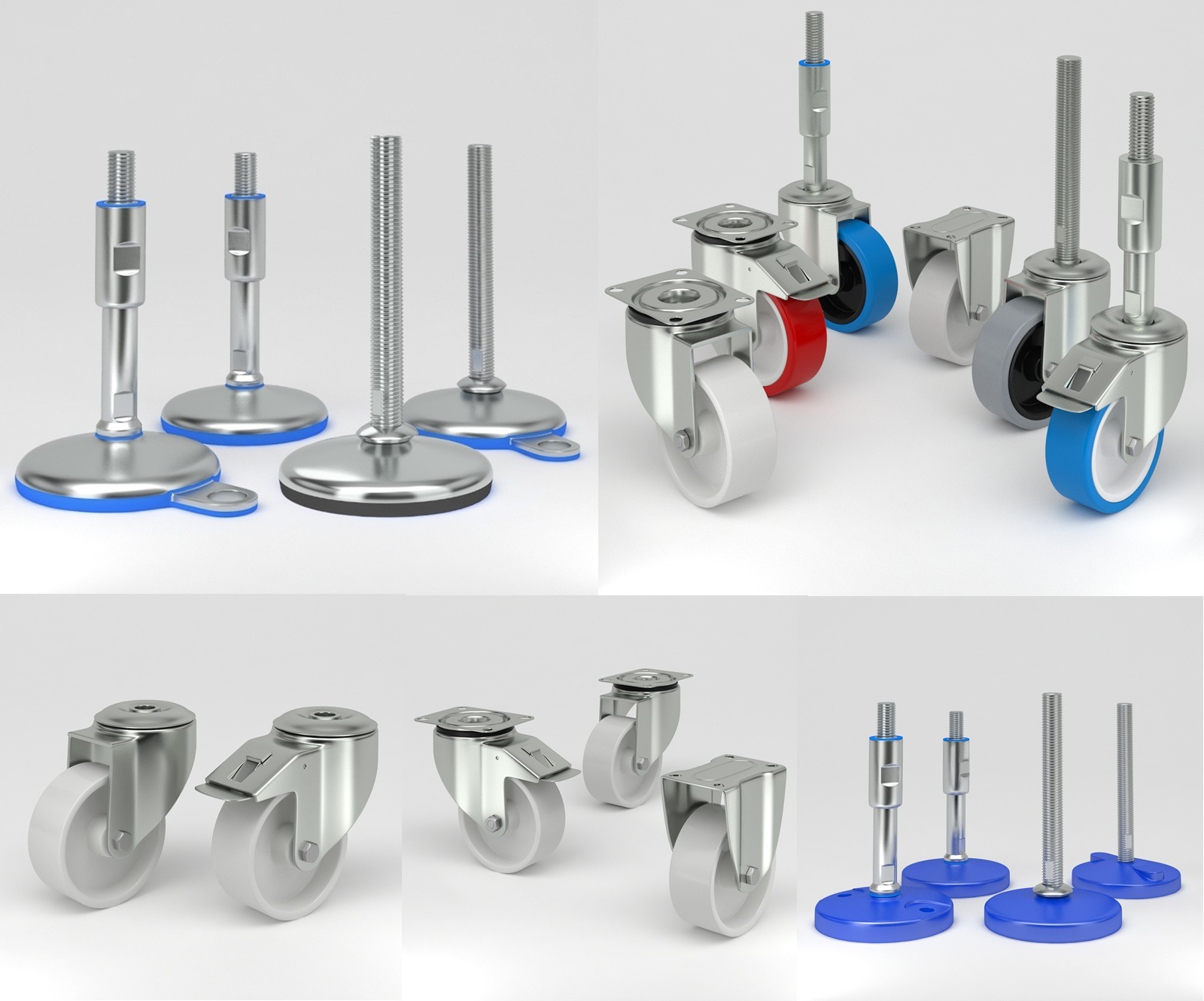
A Detailed Guide: Industrial Casters vs. Leveling Feet
Industrial equipment, machinery, and workstations require support systems that provide mobility, stability, and durability based on operational needs. The choice between industrial casters and leveling feet significantly impacts workflow efficiency, safety, and longevity. This guide explores the differences, benefits, applications, and selection criteria for industrial casters and leveling feet, helping you make the best decision for your specific requirements. Industrial casters are wheel-based components that enable mobility of machinery, carts, and workstations. They are commonly used in warehouses, factories, food processing plants, medical facilities, and laboratories. Leveling feet (adjustable machine feet) are stationary supports designed to stabilize equipment on uneven surfaces. They help prevent movement, reduce vibration, and provide height adjustability for proper alignment. ✅ Enhanced Mobility – Enables easy movement and repositioning. Disadvantages of Industrial Casters ✅ High Stability – Keeps equipment stationary, even in high-vibration settings. Disadvantages of Leveling Feet For equipment requiring both mobility and stability, leveling casters offer a dual-functionality approach. ✅ Switch Between Mobility & Stability – Move equipment easily, then stabilize it when needed. 1. Does your equipment need to be moved frequently? 2. Is absolute stability required for precision work? 3. Do you need mobility but also stability when stationary? 4. Are hygiene and easy cleaning important? 5. Will the equipment operate in a vibration-sensitive environment? The choice between industrial casters and leveling feet depends on your specific operational needs. For industries like food processing, pharmaceuticals, packaging, and biotechnology, hygienically designed components (e.g., stainless steel casters and EHEDG-certified leveling feet) ensure compliance with sanitary standards while maximizing efficiency. By selecting the right support mechanism, businesses can enhance operational productivity, safety, and compliance while ensuring long-term cost savings and durability.Industrial Casters vs. Leveling Feet
Understanding Industrial Casters and Leveling Feet
What Are Industrial Casters?
Types of Industrial Casters
What Are Leveling Feet?
Types of Leveling Feet
Key Differences: Industrial Casters vs. Leveling Feet
Feature Industrial Casters Leveling Feet Function Enables movement of equipment Keeps equipment stable and level Mobility High (movable in all directions) Stationary (no movement) Stability Moderate (depends on locking mechanisms) High (ensures zero movement) Vibration Control Minimal Excellent Load Capacity Varies by caster type (light to heavy-duty) Supports very heavy loads Floor Impact May cause marks or damage Even weight distribution, prevents floor damage Adjustability Some models have height adjustment Most models allow height modification Hygiene & Cleanability More difficult to clean (open design) Sealed, smooth surfaces for hygienic applications Durability Requires maintenance for wheels and bearings Very durable with minimal maintenance Environmental Suitability May accumulate dust/debris, less resistant to chemicals Corrosion-resistant, ideal for harsh environments Best For Equipment that needs frequent movement Machinery that must remain stable Advantages & Disadvantages
Advantages of Industrial Casters
✅ Flexible Workspaces – Allows for quick workflow adjustments.
✅ Reduced Labor Effort – Eliminates the need for heavy lifting or external transport.
✅ Different Caster Options – Rigid, swivel, locking, and spring-loaded designs available.
❌ Less Stability – Even locking casters can allow slight movement.
❌ Floor Damage Risk – Hard wheels may scratch or dent floors.
❌ More Maintenance – Wheels and bearings require periodic lubrication.Advantages of Leveling Feet
✅ Ideal for Uneven Surfaces – Adjustable feet allow for height modifications.
✅ Better Hygiene & Cleanability – Sealed, self-draining designs prevent contamination.
✅ Durable & Low-Maintenance – Stainless steel models resist corrosion and chemicals.
❌ Lack of Mobility – Equipment is fixed in place once installed.
❌ Manual Adjustment Required – Initial leveling setup may take time.
❌ Difficult to Relocate Equipment – Moving requires external lifting devices.Industry Applications
Where Industrial Casters Are Used
Where Leveling Feet Are Used
Hybrid Solution: Leveling Casters
How Leveling Casters Work
Advantages of Leveling Casters
✅ Ideal for Compact Workspaces – Allows efficient workspace reorganization.
✅ Saves Time – Eliminates the need for separate leveling feet installation.Applications of Leveling Casters
How to Choose the Right Option
✔ Yes → Choose Industrial Casters
✔ No → Choose Leveling Feet
✔ Yes → Choose Leveling Feet
✔ No → Locking Casters may be sufficient
✔ Yes → Use Leveling Casters
✔ Yes → Leveling Feet with EHEDG certification
✔ Yes → Leveling Feet provide better vibration controlThe Ultimate Guide to Stability, Mobility and Efficiency in Industrial Equipment
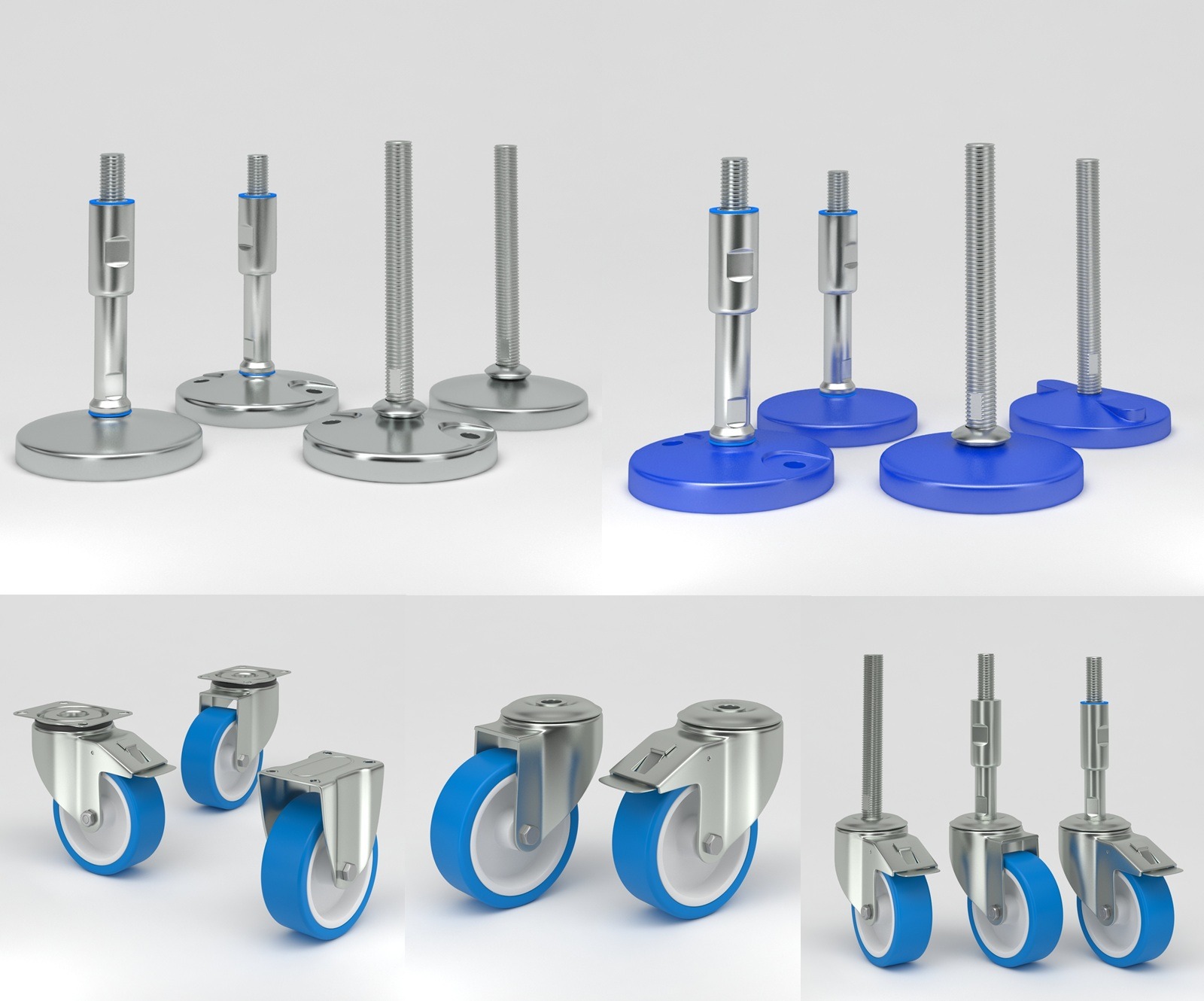
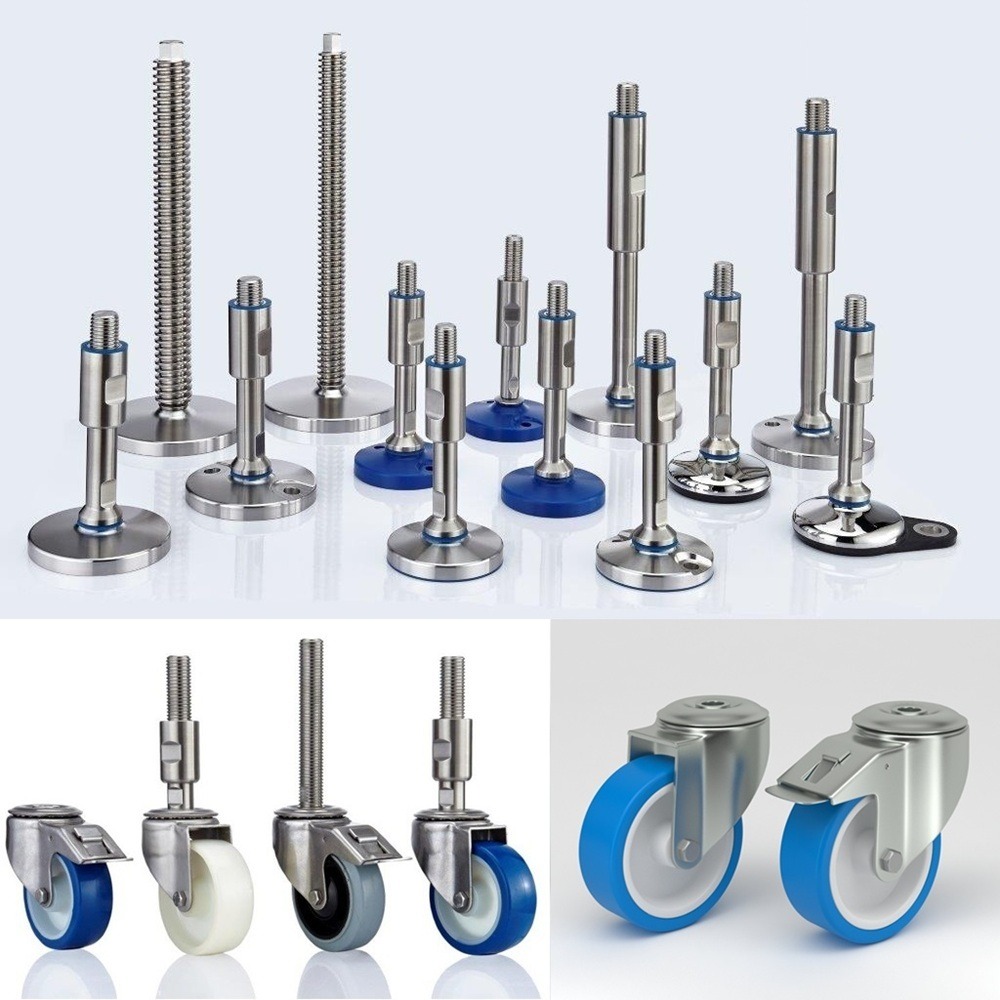
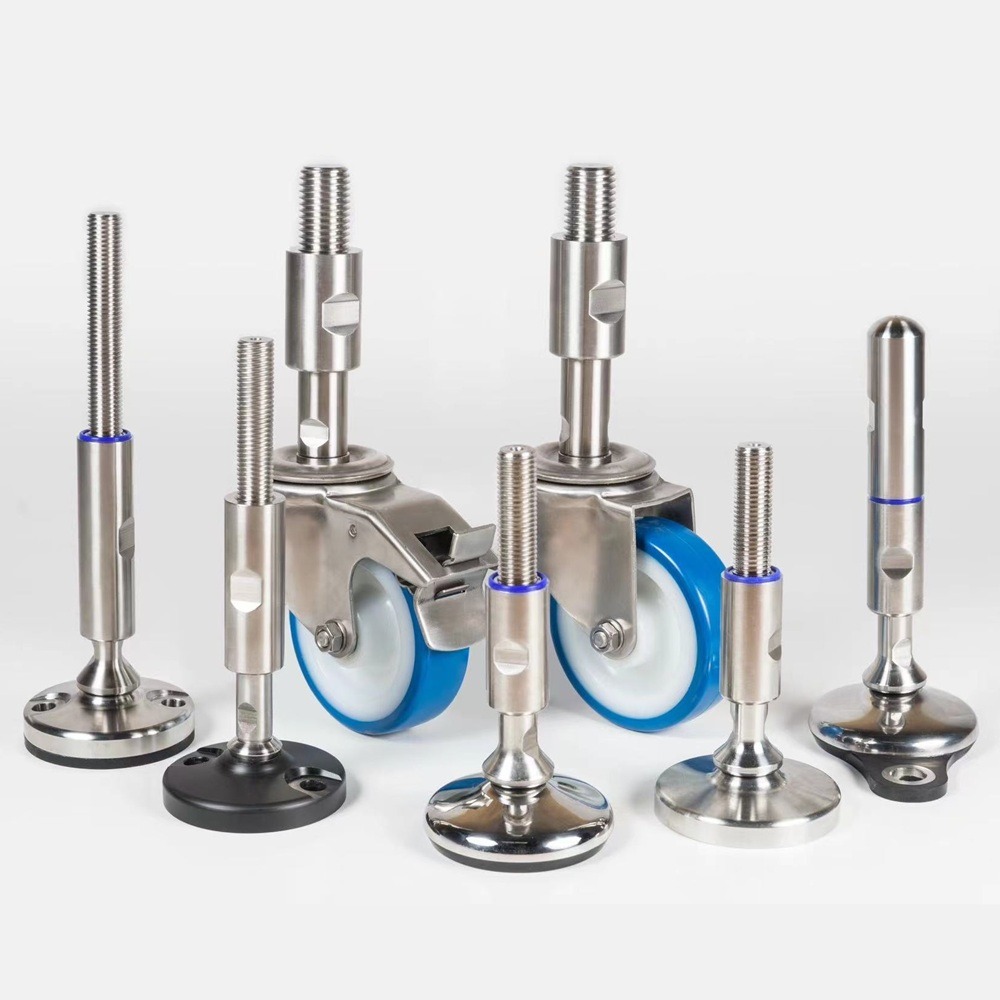
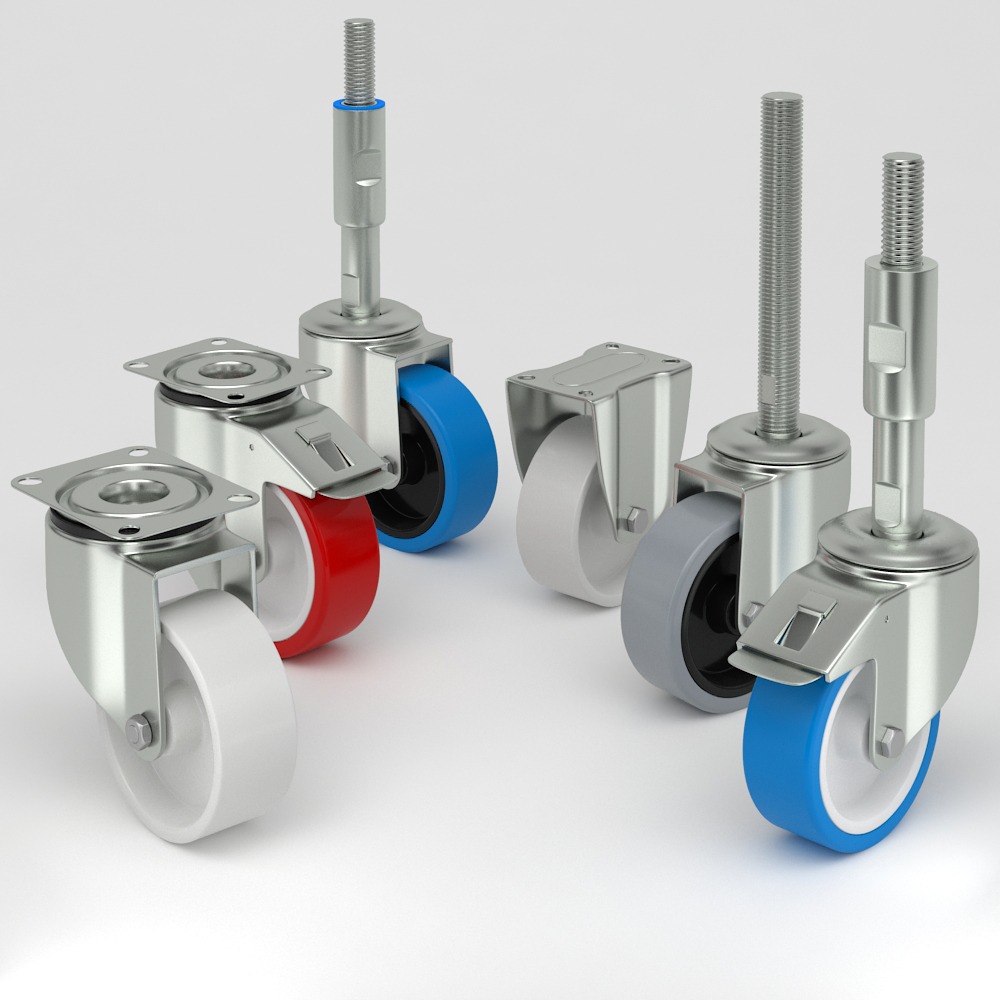
Contact
